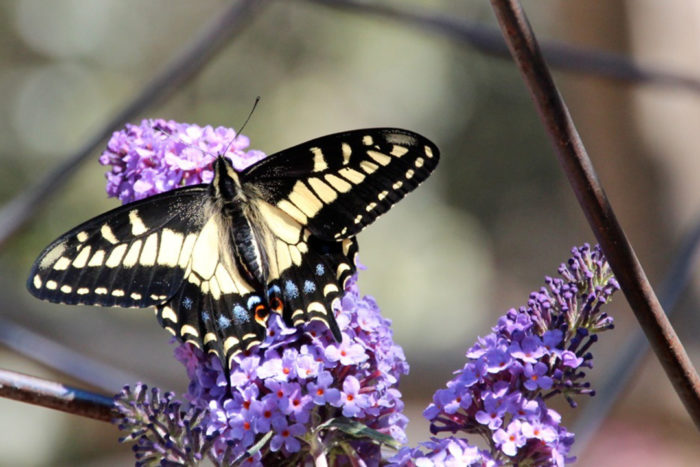
More than 130 butterfly species are found in Northern California. As delightful to watch in their natural environment as they are in your perennial border, butterflies are valuable as pollinators and are important members of Northern California’s natural ecosystem. Sadly, some populations are now in decline and have even reached endangered status; fortunately, it’s easy and extremely rewarding to create a butterfly sanctuary in your own yard geared toward ensuring the survival of these graceful, fluttering insects.
To encourage butterflies to visit, feed, shelter, and linger to lay eggs and hopefully produce a whole new generation of “winged jewels,” plan on providing summer-blooming nectar sources for the adult butterflies, larval host plants for the caterpillars to feed and grow on, shelter from wind, sun (being cold-blooded creatures, they need sun to warm their wings for flight), a water source, and most importantly, a pesticide-free environment.
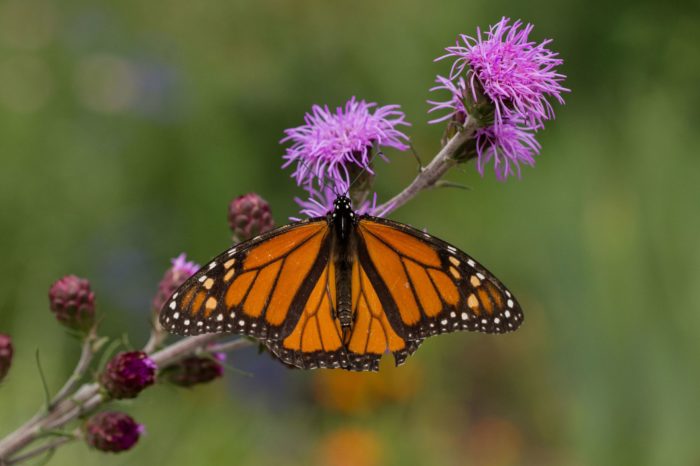
Plant choice is based on height, color, and blossom shape
Start with selecting a healthy variety of nectar-producing plants for adult butterflies that will provide continuous blooms throughout the summer, planting them in full sun (butterflies love a warm, bright environment and feed in sunshine) with regular moisture to keep your plants appropriately hydrated for improved nectar quality. Choose plant varieties that will reach different heights, with an array of flower shapes and colors, bearing in mind that adult butterflies are most active in summer and prefer flat-topped, clustered blooms in shades of blue, red, yellow, orange, and purple.
When designing your butterfly garden’s layout, plant in as natural a way as possible, imitating nature by massing multiples of your chosen nectar producers together to lessen the distance the butterflies need to travel between flowers. Mass planting also increases the aesthetic appeal of your garden, creating drifts of color and a spectacular summer display for butterflies and their beholders.
Native plants play a critical role
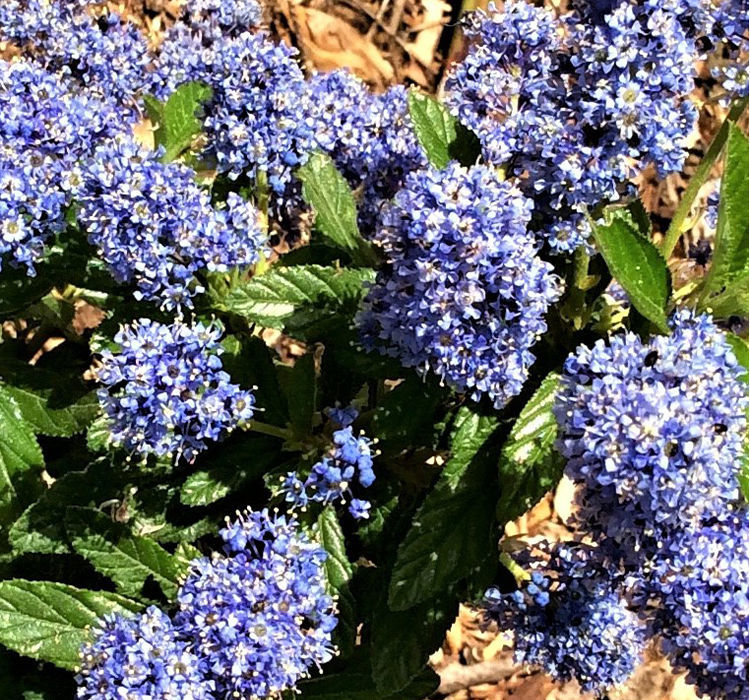
Many Northern California butterflies and native plants have co-evolved over the centuries and depend on each other for survival and reproduction, so consider including these native plants in your butterfly garden. Shrubs such as Ceanothus California lilac (Ceanothus spp and cvs., Zones 7–9) and manzanita (Arctostaphylos spp and cvs., Zones 2–9) bloom in late spring, while summer-blooming native perennials such as narrow-leaved milkweed (Asclepias fascicularis, Zones 6–9), California showy milkweed (Asclepias speciosa, Zones 3–9), buckwheat (Eriogonum spp. and cvs., Zones 4–8), and yarrow (Achillea spp. and cvs., Zones 3–9) are all high on the list of favorites for many butterfly species. Planting these natives will encourage a continuous succession of nectar-seeking tiger and anise swallowtails, monarchs, painted ladies, California tortoiseshells, red admirals, and more. Don’t forget that some natives also act as caterpillar “food”: milkweeds are larval host plants for monarch caterpillars, and the foliage of both buckwheat and California lilac feed a variety of butterfly larvae.
Nonnative plants play a role too
Nonnative perennial nectar sources extremely popular with butterflies and Northern California gardeners alike include ‘Irene’ lantana (Lantana camara ‘Irene’, Zones 8–10), a particular favorite. Tall verbena (Verbena bonariensis, Zones 7–11) is an excellent nectar source as well. If you still have space and want high-value summer-blooming annuals sure to draw butterflies, plant a drift of ‘Bright Lights’ cosmos (Cosmos ‘Bright Lights’) or an assortment of zinnias.
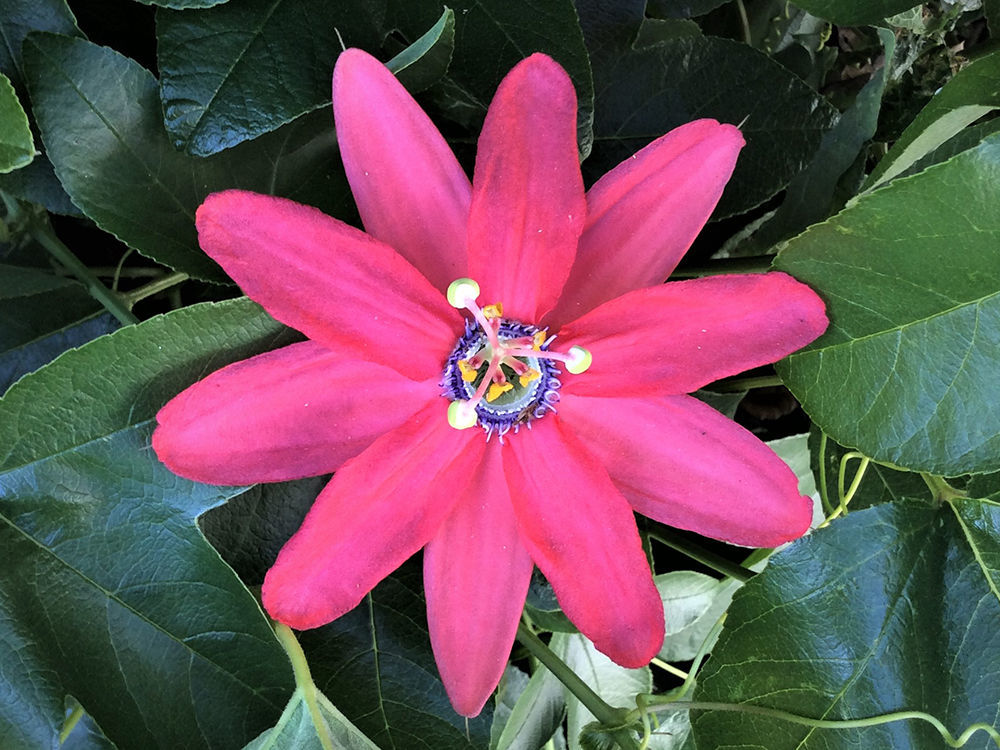
There are many attractive, nonnative larval hosts to choose from when growing your butterfly garden. Consider adding a ‘Coral Seas’ passion flower (Passiflora jamesonii ‘Coral Seas’, Zones 9–11) along a sturdy fence to host gulf fritillary caterpillars, or a stand of ‘The Watchman’ hollyhock (Alcea rosea var. nigra ‘The Watchman’, Zones 3–8) for painted lady larvae. Fennel and dill are ideal for feeding anise swallowtail young. It’s important to note that the leaves of certain fruit trees—including apples, cherries, and plums—are occasionally eaten by the larvae of butterflies you’ve attracted to your garden. Keep this in mind if you see leaf damage, and correctly identify the culprit before considering treating your tree.
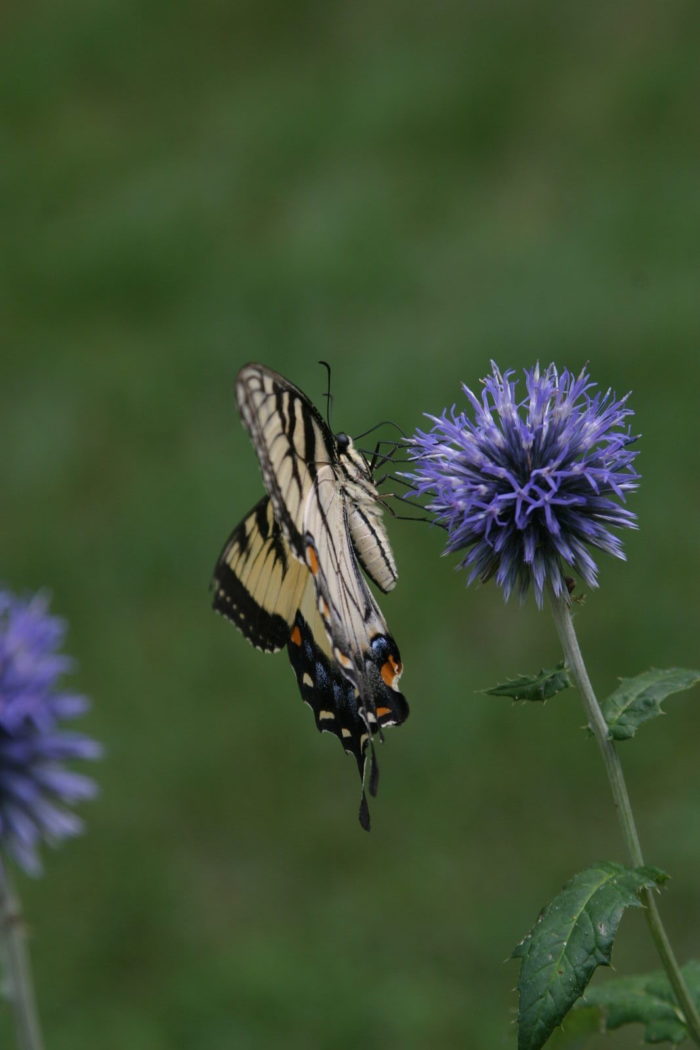
To complete your butterfly sanctuary, provide a flat, sun-drenched rock for butterflies to rest, orient themselves, and warm their wings for flight, and create a shallow, consistently moist, sandy “puddle” to serve as a water source. Finally, find a nice spot in your garden and then sit back, relax, and enjoy the show!
Fionuala Campion is the owner and manager of Cottage Gardens of Petaluma in Petaluma, California.



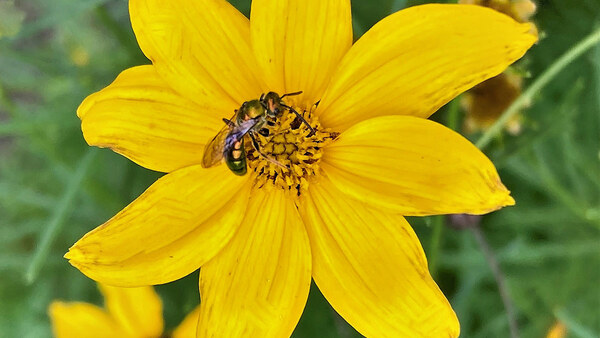














Comments
Log in or create an account to post a comment.
Sign up Log in